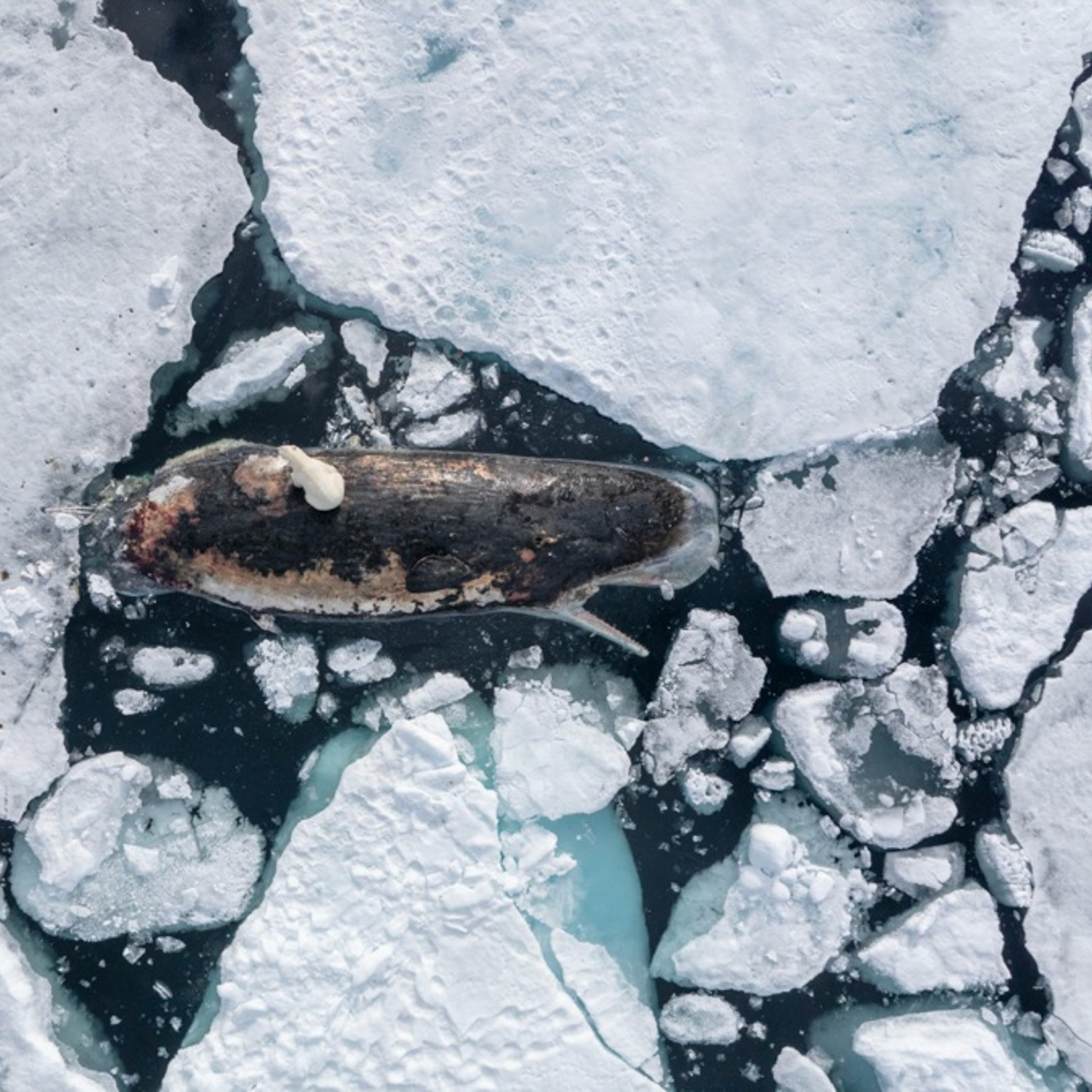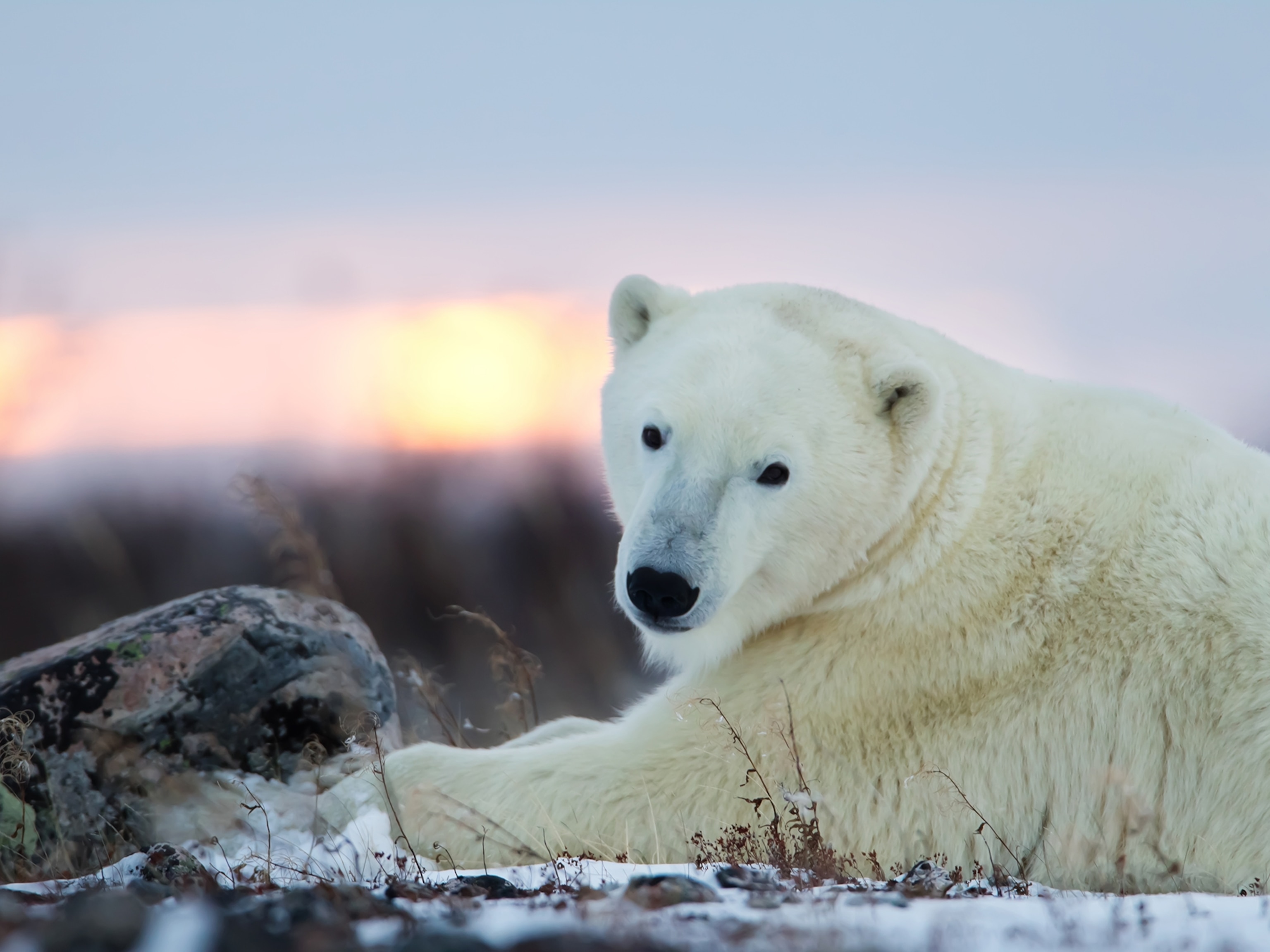Every winter, Arctic sea ice grows around the pole, its frozen tendrils threading along northern coasts. Right now sea ice has just passed its peak coverage for the year, and will begin to shrink with the coming of spring. It’s a crucial time for polar bears, whose food supply is inextricably linked to sea ice.
And in recent decades, sea ice has been shrinking faster than ever. According to the National Snow and Ice Data Center, 2019 has the seventh-lowest sea ice cover in the Arctic since they began collecting satellite data 40 years ago.
This year “doesn't break any records, but it's the trend that matters,” says University of Alberta polar bear scientist Andrew Derocher. “The downward trend in Arctic sea ice across all months is the concern,” he says, and “now we wait to see what spring conditions bring.” (Read more about global warming’s link to polar bears.)
A cold spring allows ice to linger, giving polar bears easier access to one of their favorite foods: seals. A warm spring cuts short the availability of their food super-highway. “For polar bears, it's survival of the fattest,” Derocher says.
Fatter bears have better insurance to survive the ice-free summer when food is scarce or non-existent. And fatter females need energy to successfully birth and nurse healthy babies. “No polar bear ever looked in a melt pond and thought, I'm too fat," jokes Derocher.
We’ve long known that sea ice is an important platform for polar bears to hunt and raise young, but it turns out that the ice itself also carries a valuable energy source.
More than 70 percent of polar bears’ diet—at least for three bear populations in northern Canada—can be traced back to the algae growing on sea ice, according to research published in 2018 in the journal PLoS ONE.
An icy food chain
You might picture sea ice as a vast, chunky expanse of white. That’s the view from above. But seen from below, sea ice is coated with a greenish-brown mat made up of many algae species.
See Spectacular Pictures of Polar Bears
If you’re now picturing massive jaws chowing down on a crunchy icy meal covered in green slime, no, that’s not it. Polar bears do not eat sea ice directly. Instead, researchers found that the majority of polar bears’ diet is made up of critters that ultimately depend on sea-ice algae as a food source. Their study examined polar bears from Baffin Bay, western Hudson Bay, and southern Hudson Bay.
Polar bears eat a lot of seals, and in some places, beluga whales too. Both seals and whales eat fish and other creatures that get their energy from tiny creatures called zooplankton, which in turn eat the algae on sea ice. One of the polar bear’s favorite meals, the ringed seal, eats a variety of fish and shrimp that munch on algae-eating plankton. (See what happens when polar bear finds a camera.)
Individually, these algae are “smaller than a hair’s width,” says Thomas Brown, a marine ecologist at the Scottish Association for Marine Science. But collectively, tiny sea ice algae have a massive impact on polar ecosystems.
After each long dark Arctic winter, spring light stimulates algal growth. That provides a bonanza for tiny creatures called copepods, amphipods, and zooplankton that feed on sea-ice undersides. In summer as ice melts, the algae sink. Fish that scour the sediments, and seals that eat those fish, create the links that clamber up the food chain to polar bears.
Bears on ice
Over the years, Brown has explored polar ecosystems from the bottom up, so to speak. While examining starfish and sea urchins on the seafloor, he found that they contained a chemical also found in sea-ice algae, indicating that algae from up above had made it into their food supply.
Then Brown and his team looked for this chemical, called IP25, as a biomarker of sea-ice algae’s presence in polar bears. They collaborated with government officials in the Canadian territory of Nunavut and with Inuit people, who provided liver samples from subsistence-hunted polar bears. The results showed that carbon derived from sea ice dominated the predators' diets.
The University of Alberta's Derocher applauds the study, adding there are 19 polar bear populations across the Arctic, so the next obvious next step is to examine more of them. (Read how polar bears are showing up in surprising places.)
He adds that while ecosystems are robust, if you take away one component, “it won’t be that same ecosystem over time.” He thinks of sea ice as akin to soil in a forested ecosystem: “It’s a substrate that’s essential to the ecosystem as we know it.”
Sea ice is already known as important habitat for polar bears. “But what if we’re not seeing the whole picture, and what if sea ice is more important than we’re giving it credit for?” says Brown. “Less sea ice means less habitat, not only for polar bears but, importantly, also for the sea ice microorganisms that form a big part of the very base of the bear’s food chain,” he says.
With sea ice availability changing, “we may need to revise our assessments of how threatened polar bears are likely to be,” says Brown. It’s too early to tell, he adds, but it’s clear that for polar bears, ice is nice in multiple ways.





















